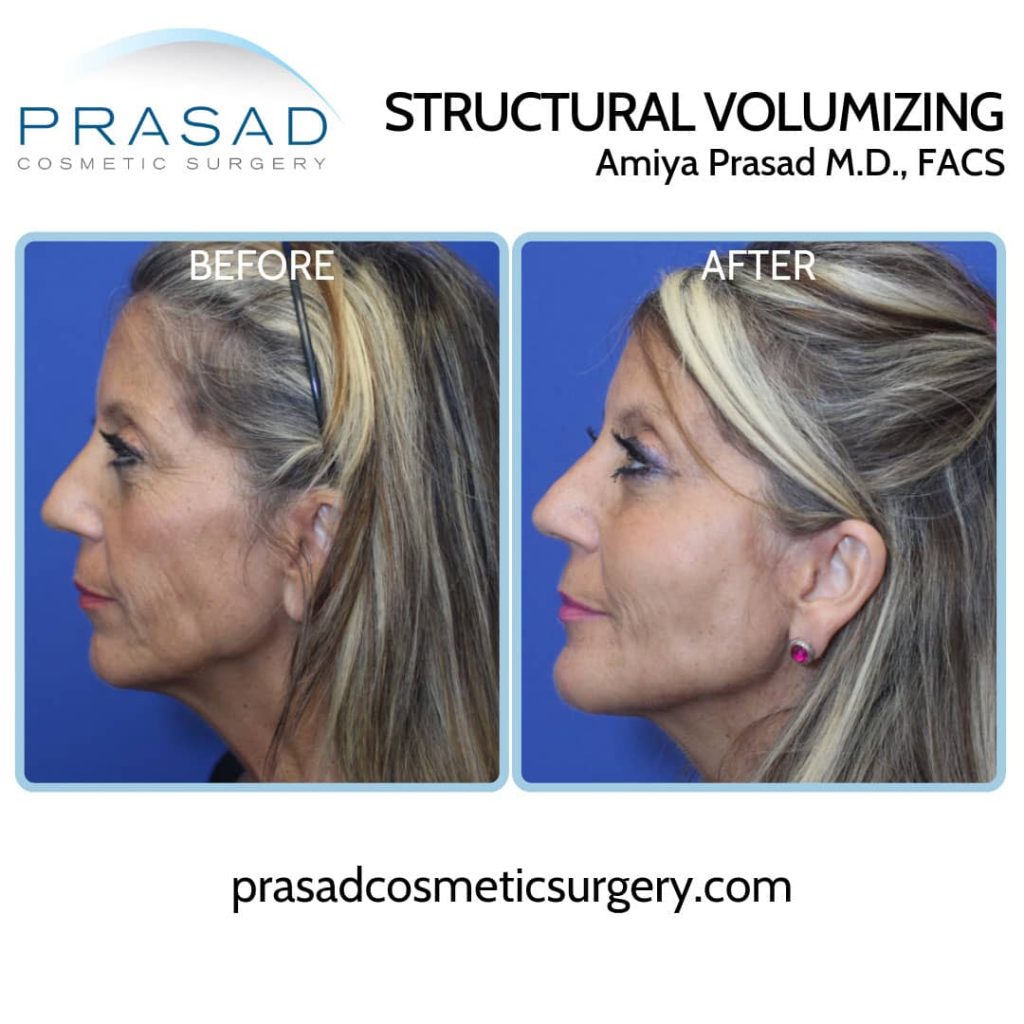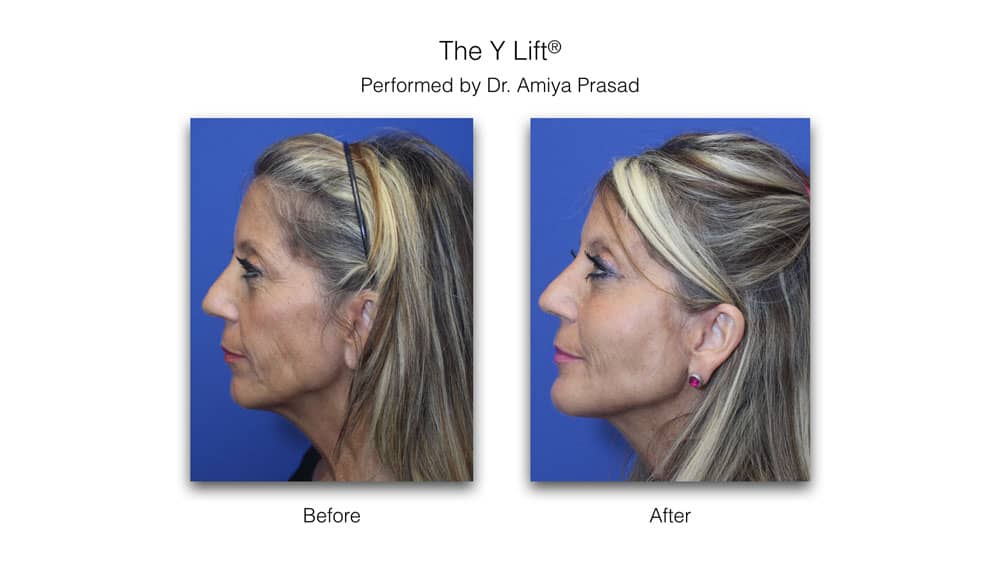As a facial cosmetic surgeon, patients often ask if transferring fat to the face is a better way to treat age-related volume loss than cosmetic fillers. The preference for a fat transfer is understandable since it’s a natural material from your own body. While this is true, most people are not aware of the complexity of how fat behaves once it is transferred from its original location to the face, and that cosmetic filler can also be a natural, biocompatible material. I’ll discuss how both transferred fat, and cosmetic fillers adapt when placed in the face, and the advantages these materials have over the other.
Since the beginning of my practice, I have performed both facial fat transfers, and facial filler placement. In the beginning, I used collagen fillers that required allergy testing before use, but now we prefer hyaluronic acid fillers which are hypoallergenic, easily reversible, and available in a variety of thicknesses for various facial areas. Filler placement techniques have also evolved so that they can be used in the deeper bone structure of the face, resulting in more natural and defined results.
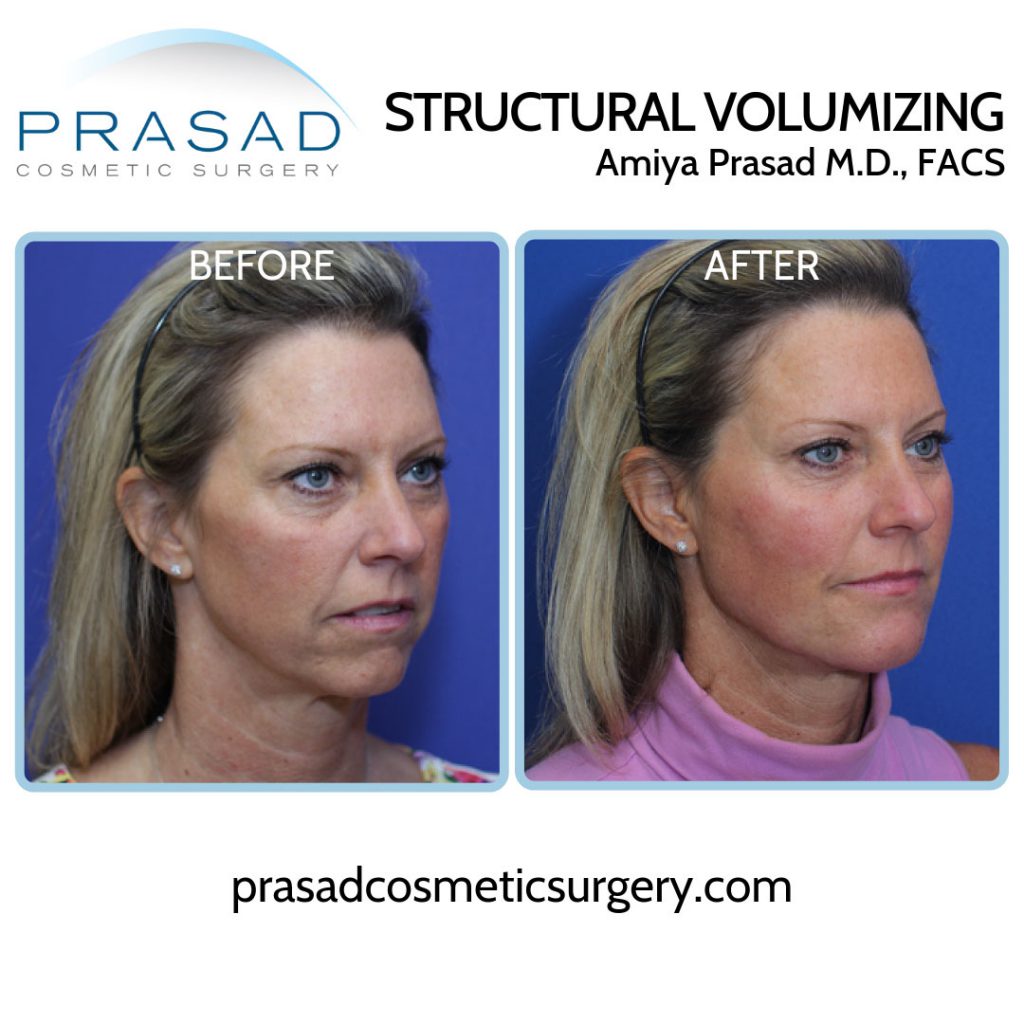

When it comes to facial fat grafting, things are more complicated than fat is a natural material, thus better. Fat grafting involves surgically removing fat from an area where fat volume is undesirable, most commonly the abdomen, then processing and refining the fat for impurities before surgically transferring it to a new location, such as the cheeks. While I do not recommend or perform fat grafting under thin eyelid skin due to the high risk of complications, I do perform fat grafting in areas with thicker skin, such as the midface or brow.

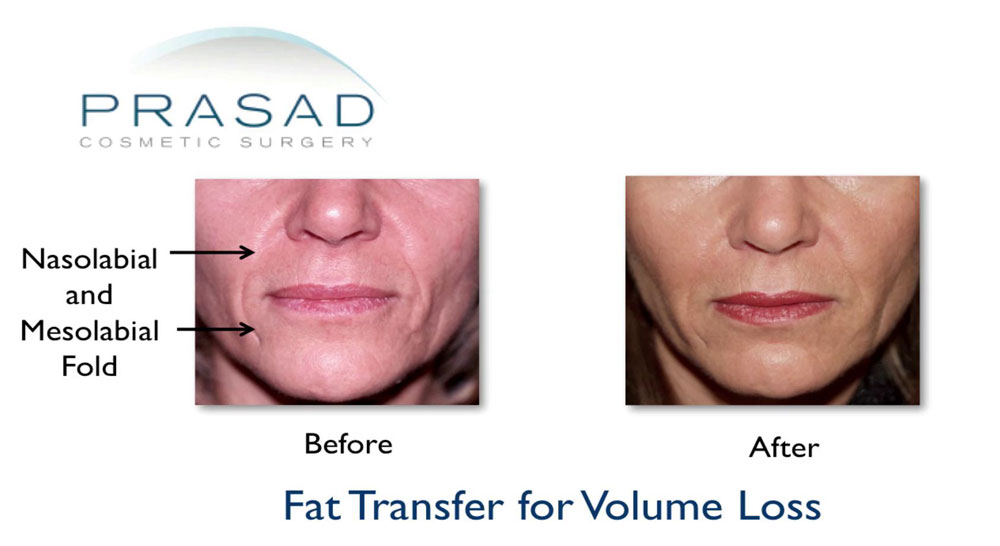
Fat Grafting Face Procedure
Fat grafting involves two surgical procedures: one to extract fat from the donor site, and one to place the fat into the face.
Fat Transfer to Face Pros and Cons
With two surgical procedures, fat grafting is already at a disadvantage to cosmetic filler placement, which can be done in minutes through an injection treatment, so patient convenience, as well as the general higher cost for surgical procedures, should be considered. The behavior of grafted fat is a critical consideration that involves a number of factors. Fat behaves more erratically when it is removed from its original location. When fat is transferred, it must find a new blood supply in order to survive. If the transferred fat does not take up residence in a new blood supply, it can be quickly metabolized, which is why 30-70% of transferred fat is quickly absorbed or metabolized by the body shortly after the procedure. Because of this rapid absorption, I advise my fat grafting patients to expect more than one procedure to achieve their desired volume.
In contrast, because hyaluronic acid filler does not require a blood supply to function, so the volume result of a single procedure is much more stable, reliable, and predictable. When fat is grafted on both cheeks, there is likely to be a difference in how much grafted fat remains in each cheek, resulting in uneven volume and shape. Since hyaluronic acid, which is used in fillers, is naturally present in the body, these fillers are gradually and safely metabolized over time, which takes about 1-2 years depending on the thickness of the filler.
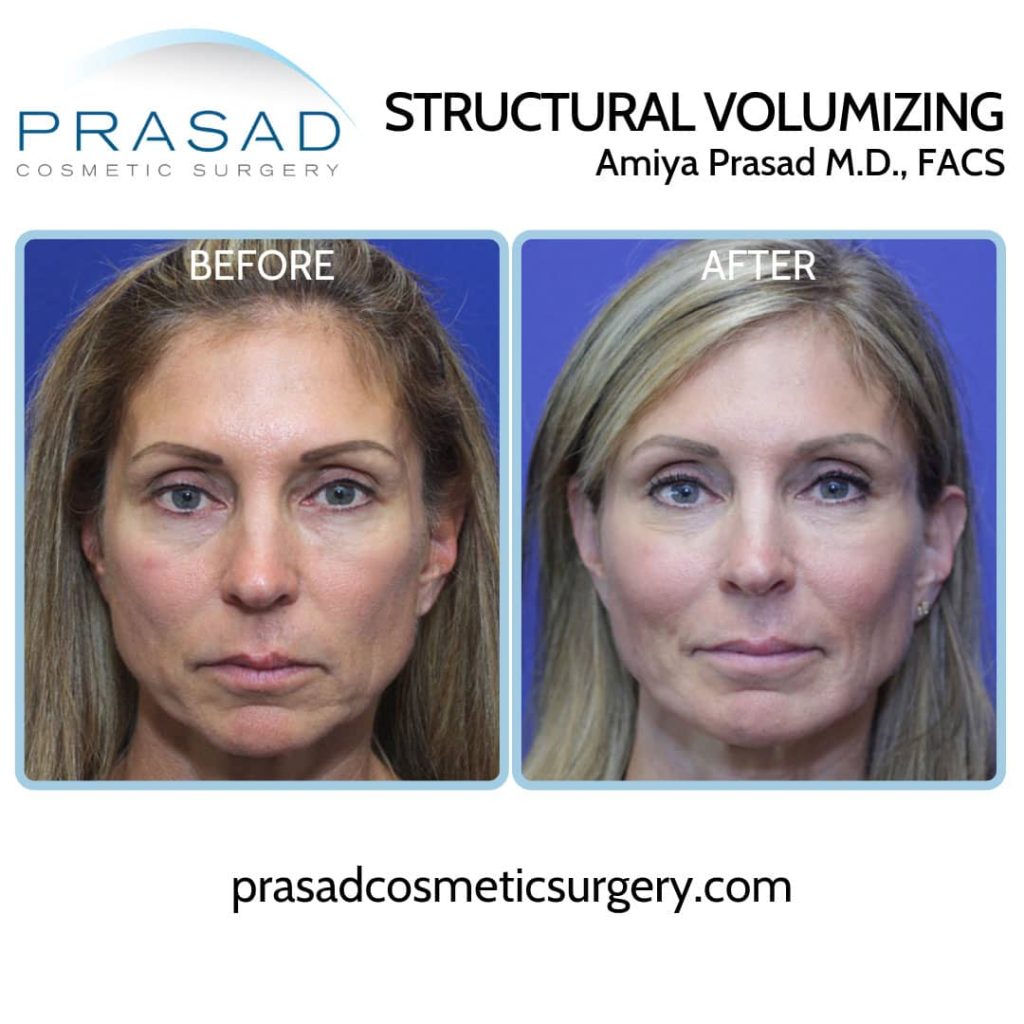
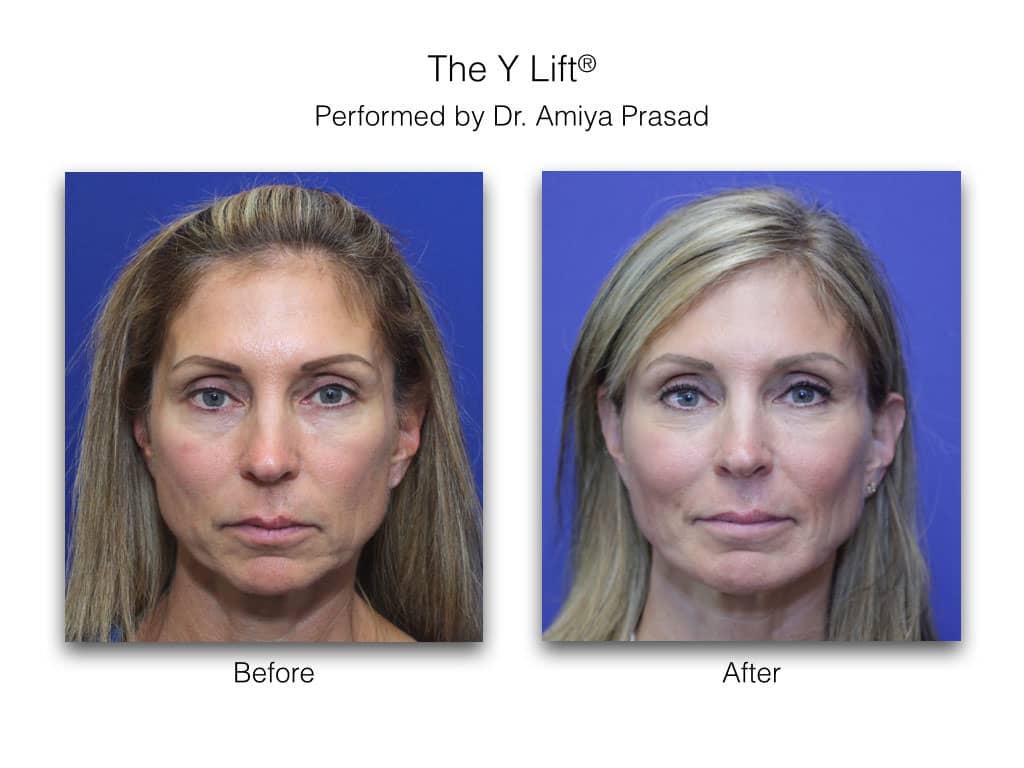
What are the Cons of Face Fat Transfer?
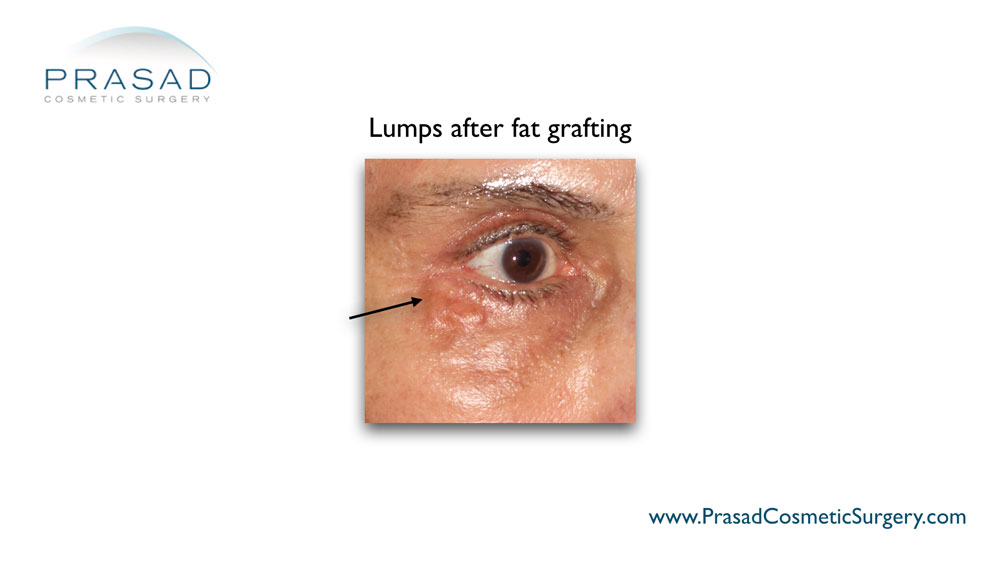
Cosmetic filler is malleable until the time of placement, and predictably retains a smooth texture once it is placed in the body.
A significant limitation with facial grafting is the anatomic level where you can place the volume. Age-related facial volume loss is due to diminishing soft tissue, muscle, thinning of the skin, and most of all, loss of bone mass. For natural-looking results of volume enhancement, I place cosmetic filler at the deeper structural level of the face, which is the bone level. This is a more advanced filler placement technique as most doctors place filler at the more superficial dermal level closer to the skin’s surface, or at the fat and soft tissue level.
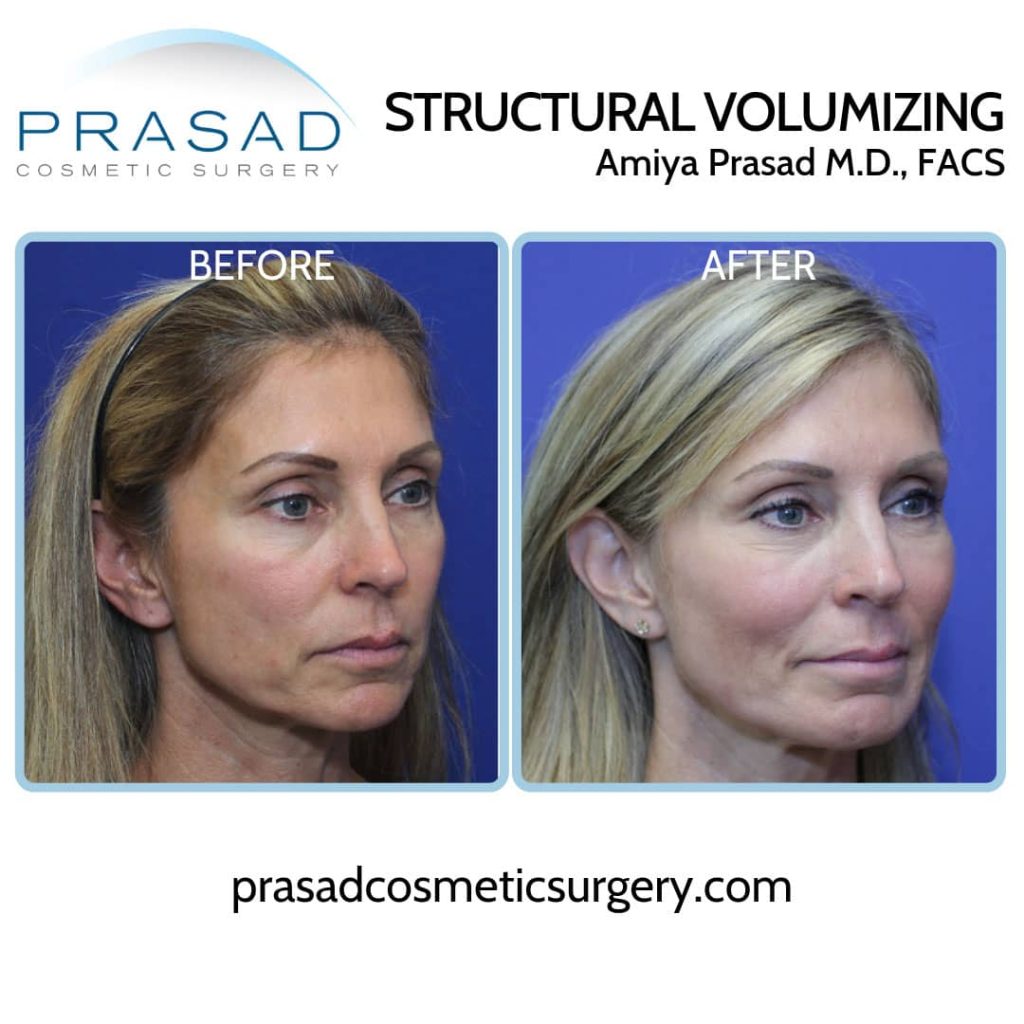
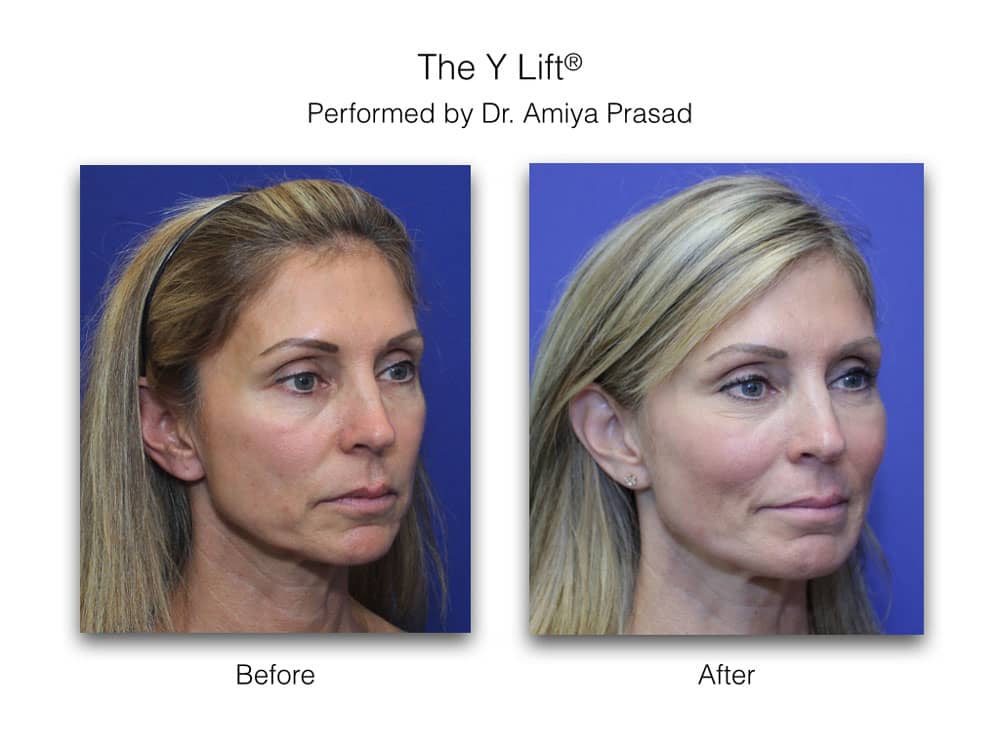
When cosmetic fillers are placed at these more superficial levels, they can migrate, or be overfilled because they are not strong enough to hold the material, so results can look soft, doughy, and amorphous. Placing fat at these levels can have similar results due to not holding its shape, having an inconsistent texture, or lacking definition. To enhance lost bone volume, I place filler deeper than most doctors, at the structural bone level. This technique makes results look more solid and defined since volume is placed at the stronger structural level, with the muscle layer holding the material in place.
While filler can be placed at the bone level without surgery, but uses surgical knowledge of this deeper level of the face, fat cannot be grafted to the bone level of the face. The bone level does not have the blood supply for fat to survive, so fat transfers are limited to the fat or soft tissue level of the face where they may take to blood supply and remain viable, or don’t take so grafted fat is metabolized and lost. The behavior of fat thereby limits where it can be placed, ruling out areas like the cheekbones, chin, and jawline, where for volume enhancement to look natural, and to supplement the loss of bone mass, filler is ideally placed at the bone level.
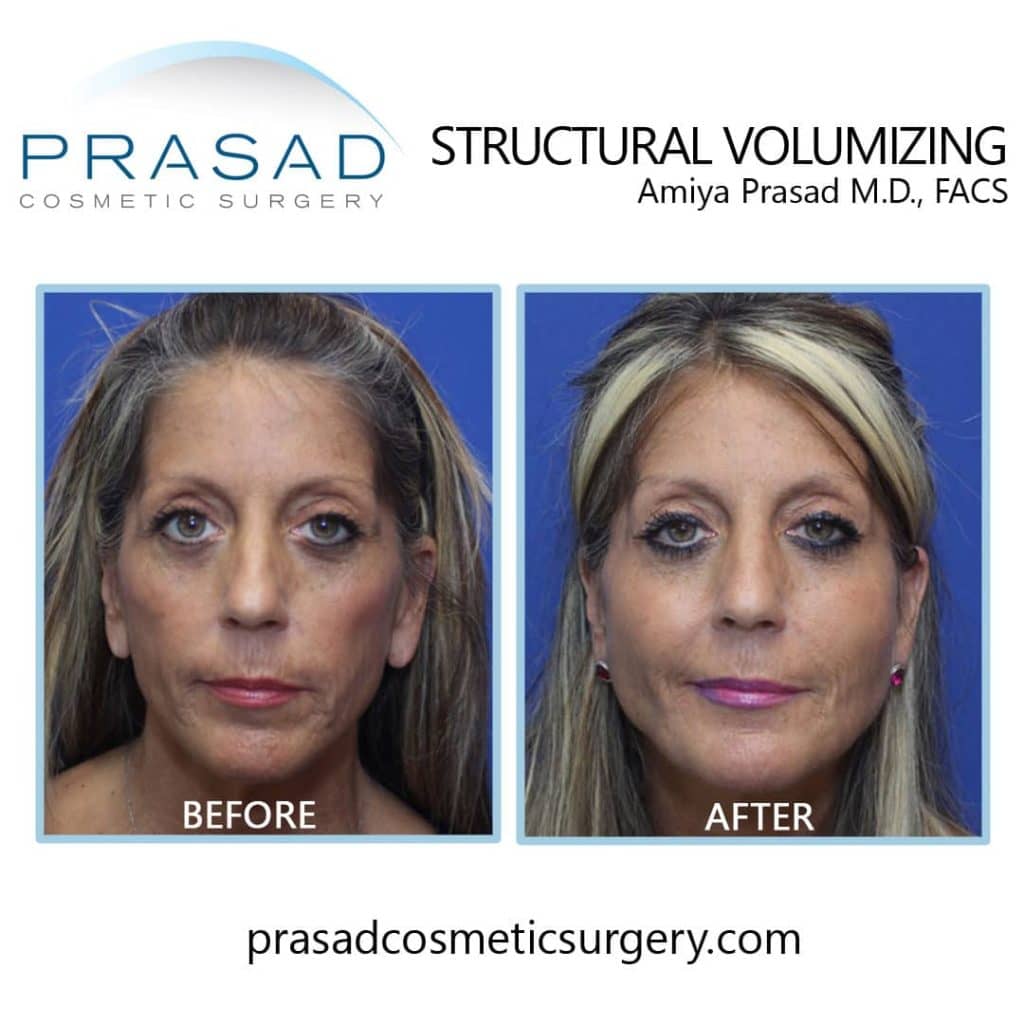
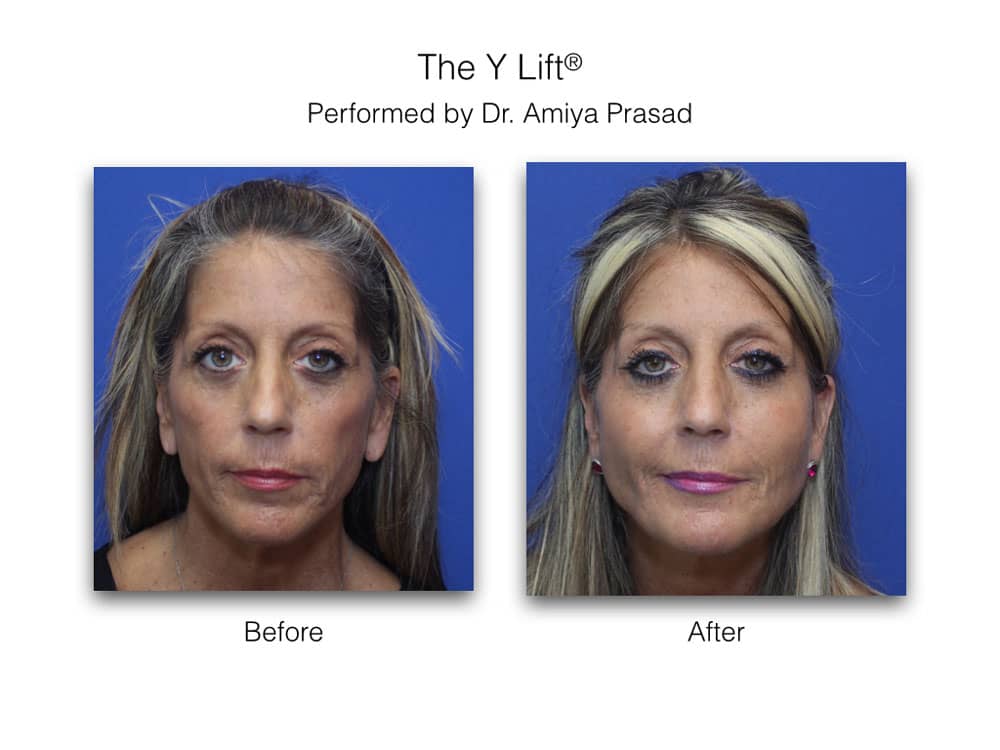
How Long Does Facial Fat Grafting Last?
Grafted fat that accepts a new blood supply can last for up to 5 years.
There are permanent and semi-permanent fillers on the market, but because they are resistant to metabolic processes, they are highly prone to complications such as foreign body reactions, infection, and can break apart when in the body for an extended period of time, necessitating extensive surgical removal, and some of the foreign material will always remain in the body, causing further complications.
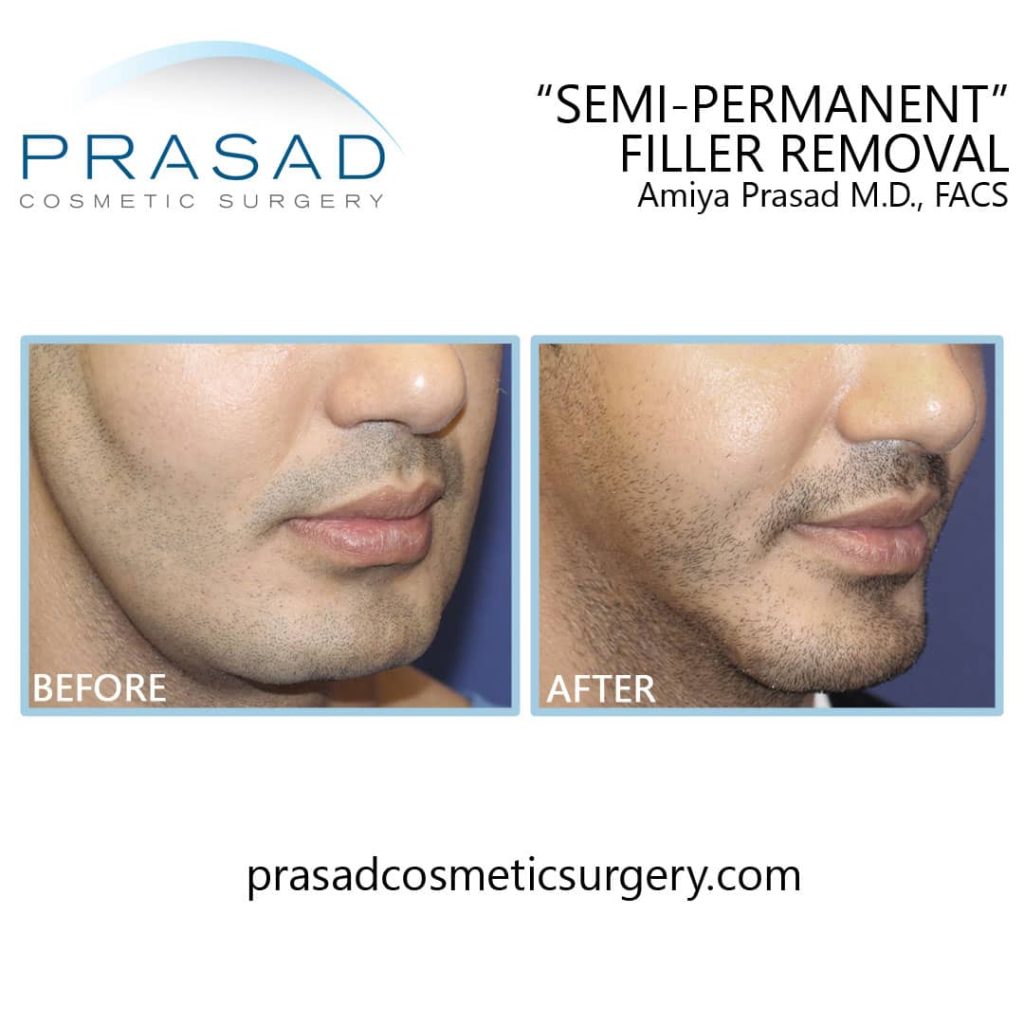
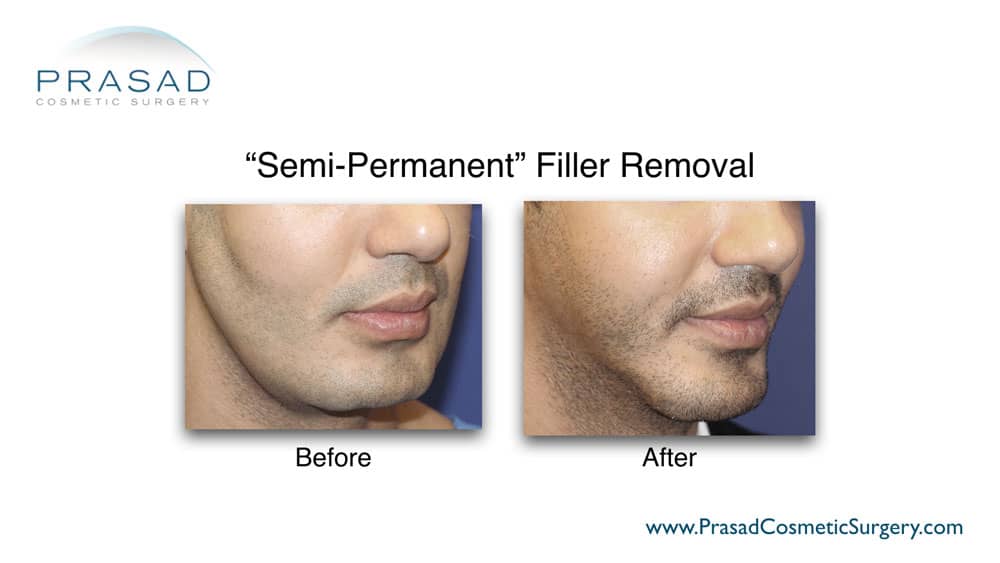
For the safety of my patients, I don’t recommend permanent and semi-permanent fillers to any of them. As mentioned earlier, hyaluronic acid is naturally present in the body to help retain moisture and water in the skin, as well as lubricate the joints, so these fillers are well-tolerated by the body, and easily and fully metabolized with time. From the perspective of safety, having fillers that fully metabolize in 1-2 years is a good thing.
So, while hyaluronic acid fillers do require periodic maintenance to sustain volume, fat grafting may require a different type of maintenance since results are more uneven, unpredictable, and the material is less versatile since it can’t be placed at the bone level, which is the foundational level where most age-related volume loss occurs. And while non-surgical filler treatment can take minutes to perform, and minutes to maintain, fat grafting will always be a double surgical procedure to harvest and graft fat, and any further volume enhancement will require more surgery.
Is Facial Fat Transfer Better than Filler?
When only grafted fat could help augment facial volume, especially in people who had allergic reactions to collagen fillers, surgical fat grafting was a procedure for its time. The unpredictability of grafted fat in terms of shape, and volume, as well as repeated surgical procedures to compensate for fat that was quickly absorbed shortly after grafting, were patient inconveniences tolerated because there were no other options. Patients no longer have the same tolerance for repeat fat grafting surgeries, and unpredictable results since the introduction of hyaluronic acid fillers, and later thicker and longer lasting hyaluronic acid fillers.
